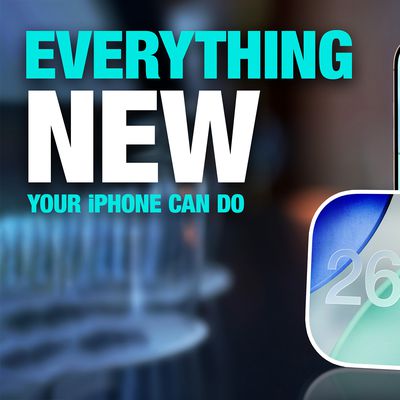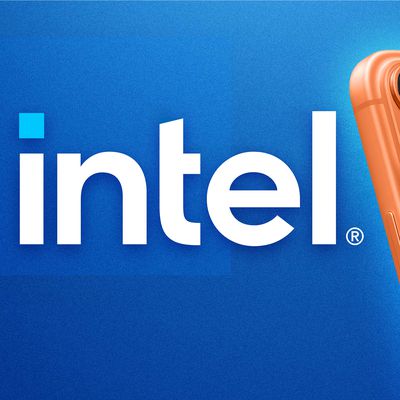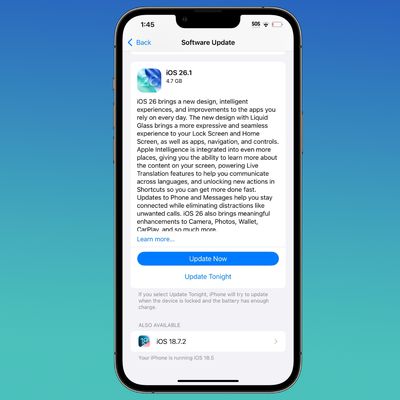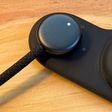Samsung Said to Follow Apple's Lead with Fingerprint Sensor, No Iris Scanner in Galaxy S5
Previous rumors hinted that Samsung's next flagship device would leapfrog the iPhone 5s with new iris scanning technology, but that rumor may be inaccurate. A recent report from The Korea Herald claims the Korean handset maker instead is working on fingerprint sensor technology for its upcoming flagship Galaxy S5 phone.
"Among the different types of biometric sensors that Samsung is testing for its Galaxy S5, the tech giant will go for fingerprint authentication rather than unintuitive user experience of iris recognition," said an industry source who declined to be named.
"Who would want to put their handset up close to their eyes for authentication in places like movie theaters and bed, or even while they are driving?," the industry source added.

Samsung Vice President Lee Young-hee said in a recent Bloomberg interview that the company was looking into the possibility of using an iris scanner, but can't confirm that the technology would be incorporated into the Galaxy S5.
“Many people are fanatical about iris recognition technology. We are studying the possibility but can’t really say whether we will have it or not on the S5.”
The Korea Herald report cites industry sources who claim the iris scanning technology would provide an unfamiliar and uncomfortable user experience. It also is technically challenging as it would require a long-range camera, in addition to a rear camera and a front-facing camera. The inclusion of three camera modules would force Samsung to redesign both the internal layout and form factor of its Galaxy S phones.
Apple has also been rumored to be working on iris scanning functionality, but industry insiders predict it will take several years before a single camera module will be able to serve dual functions as a front-facing camera and an iris scanner. In the interim, manufacturers like Samsung are expected to adopt display-wide fingerprint scanners that would unlock a phone by allowing a user to tap on the screen. Apple has revealed its own interest in such technology, including the ability to turn display areas corresponding to app icons such as those for banking or email apps into fingerprint sensors.
Popular Stories
Apple is about to release iOS 26.2, the second major point update for iPhones since iOS 26 was rolled out in September, and there are at least 15 notable changes and improvements worth checking out. We've rounded them up below.
Apple is expected to roll out iOS 26.2 to compatible devices sometime between December 8 and December 16. When the update drops, you can check Apple's servers for the ...
Intel is expected to begin supplying some Mac and iPad chips in a few years, and the latest rumor claims the partnership might extend to the iPhone.
In a research note with investment firm GF Securities this week, obtained by MacRumors, analyst Jeff Pu said he and his colleagues "now expect" Intel to reach a supply deal with Apple for at least some non-pro iPhone chips starting in 2028....
A U.S. appeals court has upheld a temporary restraining order that prevents OpenAI and Jony Ive's new hardware venture from using the name "io" for products similar to those planned by AI audio startup iyO, Bloomberg Law reports.
iyO sued OpenAI earlier this year after the latter announced its partnership with Ive's new firm, arguing that OpenAI's planned "io" branding was too close to its...
Apple's iPhone development roadmap runs several years into the future and the company is continually working with suppliers on several successive iPhone models at the same time, which is why we often get rumored features months ahead of launch. The iPhone 18 series is no different, and we already have a good idea of what to expect for the iPhone 18 Pro and iPhone 18 Pro Max.
One thing worth...
In a statement shared with Bloomberg on Wednesday, Apple confirmed that its software design chief Alan Dye will be leaving. Apple said Dye will be succeeded by Stephen Lemay, who has been a software designer at the company since 1999.
Meta CEO Mark Zuckerberg announced that Dye will lead a new creative studio within the company's AR/VR division Reality Labs.
On his blog Daring Fireball,...
Apple is expected to launch a new foldable iPhone next year, based on multiple rumors and credible sources. The long-awaited device has been rumored for years now, but signs increasingly suggest that 2026 could indeed be the year that Apple releases its first foldable device.
Subscribe to the MacRumors YouTube channel for more videos.
Below, we've collated an updated set of key details that ...
There is uncertainty about Apple's head of hardware engineering John Ternus succeeding Tim Cook as CEO, The Information reports. Some former Apple executives apparently hope that a new "dark-horse" candidate will emerge.
Ternus is considered to be the most likely candidate to succeed Cook as CEO. The report notes that he is more likely to become CEO than software head chief Craig Federighi, ...
Apple is encouraging iPhone users who are still running iOS 18 to upgrade to iOS 26 by making the iOS 26 software upgrade option more prominent.
Since iOS 26 launched in September, it has been displayed as an optional upgrade at the bottom of the Software Update interface in the Settings app. iOS 18 has been the default operating system option, and users running iOS 18 have seen iOS 18...
Apple today seeded the release candidate versions of upcoming iOS 26.2 and iPadOS 26.2 updates to developers and public beta testers, with the software coming two weeks after Apple seeded the third betas. The release candidates represent the final versions of iOS 26.2 and iPadOS 26.2 that will be provided to the public if no further bugs are found during this final week of testing....
























